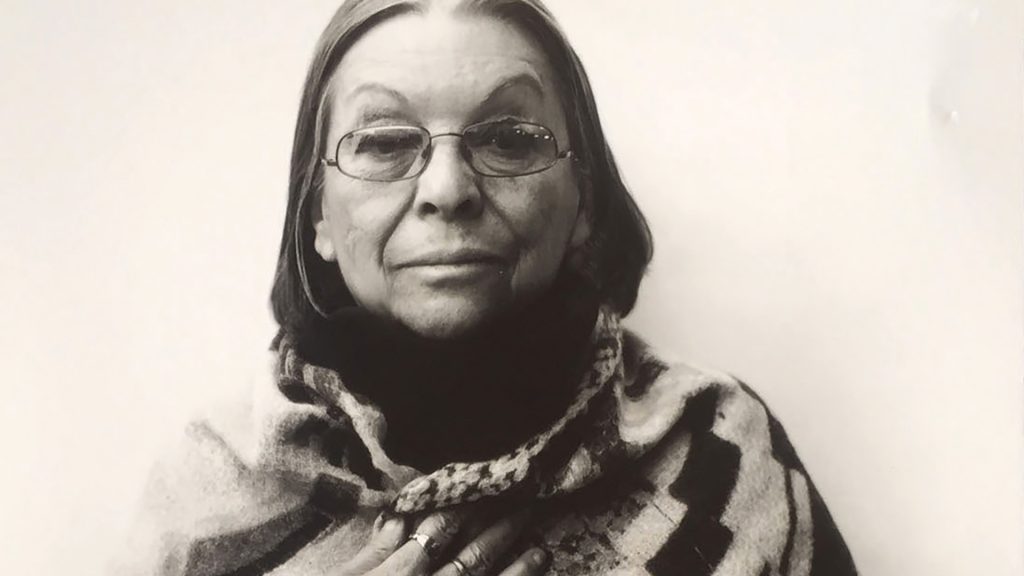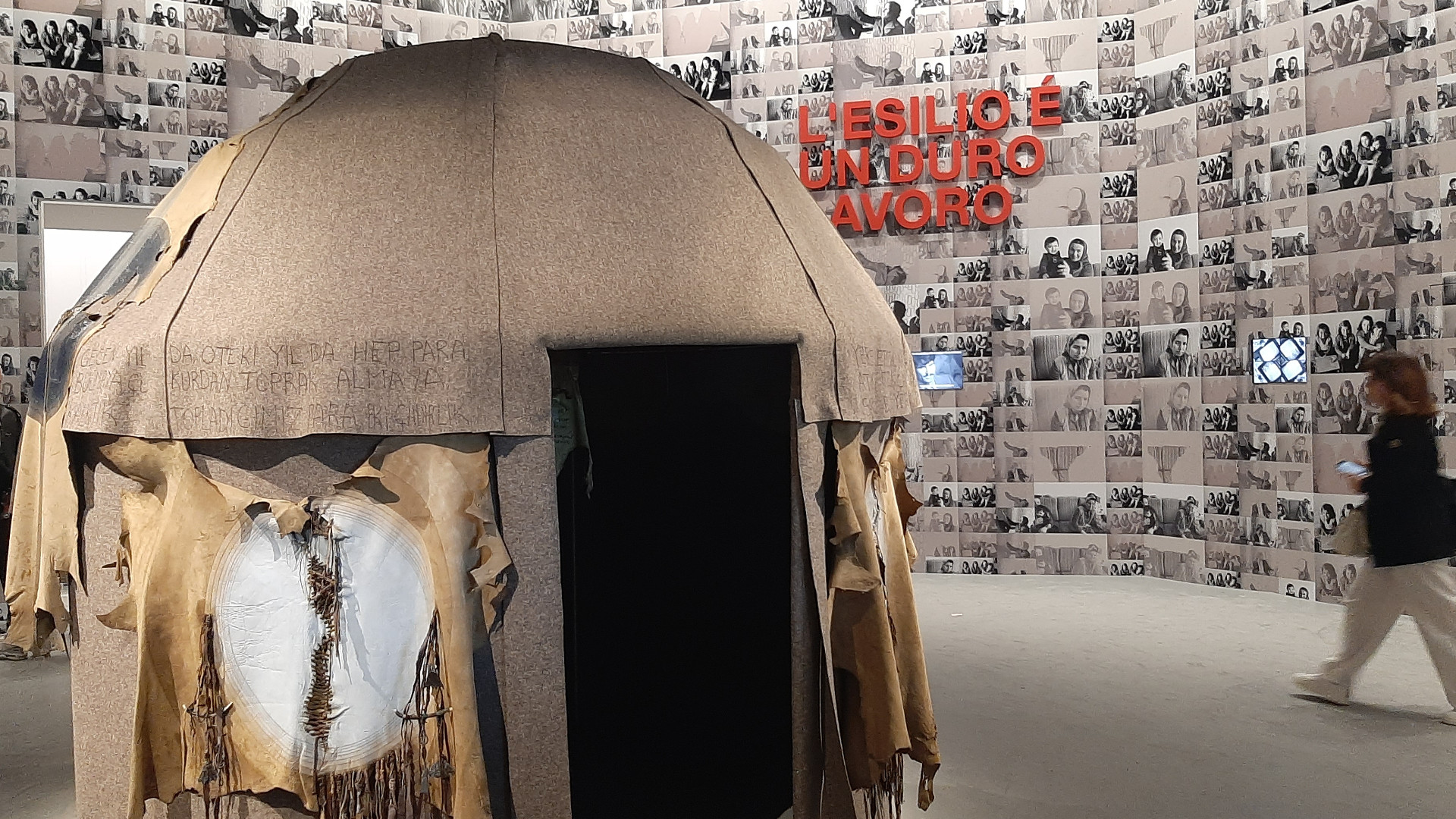
Born in Cairo, Egypt, in 1938, raised in Istanbul and living in Paris since 1965, Nil Yalter is awarded with the Golden Lion for Lifetime Achievement. Throughout her career Yalter has addressed social, political and gender issues with a focus on questions related to identity and migration. Her breathtaking ‘Topak Ev’ at the Giardini della Biennale, exhibited for the first time alongside ‘Exile is a Hard Job.’
Exile Is a Hard Job. These words by Turkish poet Nâzim Hikmet capture the essence of Nil Yalter, a nomadic artist, experimenter with expressive techniques, pioneer of multimedia and tireless explorer of the possibilities of conceptual art. Born in Cairo, Egypt, in 1938, raised in Istanbul and living in Paris since 1965, Nil Yalter has throughout her career addressed social, political and gender issues with a focus on questions related to identity and migration. Her attention towards marginalised groups, from the inmates of a Paris prison and the women of the nomadic tribes of Anatolia to the immigrant communities in the banlieues of Paris, is almost anthropological, and her work describes, highlights, testifies and restores dignity. Her artistic career began in 1957, when she held her first exhibition at the French Cultural Institute in Mumbai, India, but it was in Paris that she opened a new, experimental and pioneering chapter of her work. In 1973 she showed some of her drawings of a yurt to Suzanne Pagé, chief curator of the Paris Museum of Modern Art, who proposed a solo exhibition by the end of that same year. With the help of an ethnographer friend, Yalter made contact with one of the nomadic tribes in Anatolia and spent a few weeks with them, particularly with the women of the village, who from the age of fourteen begin to build the tent of animal skins where they will live when they marry. Thus was born one of Nil Yalter’s most iconic works: Topak Ev (“circular house” in Turkish), which after Paris was exhibited in venues including the Kunst Halle in Göttingen, the Museum Santral in Istanbul and the MAM in Rio De Janeiro in 2014. It was Adriano Pedrosa himself who pushed to have Topak Ev exhibited in the museum and who organised for it to be transported to the other side of the ocean for the first time. The following year Yalter created La Roquette, prison de femme a series of videos based on the story of Mimi, a former inmate of the famous Parisian women’s prison which was closed and demolished in 1974. From the same year is The Headless Woman or the Belly Dance, a fundamental piece of work in which Yalter addresses the theme of women’s self-representation and control over their own bodies. The images show a woman dancing, but we can see only her belly and some writing on her skin taken from a text by René Nelli, Erotique et civilizations.

All Yalter’s work seems to flow in the same direction, each piece the evolution of the previous one, each containing a linguistic element that evokes, rather than explains, the human, social and political universe in which that work was created. From the stories of the nomads in Anatolia Yalter had learned about their husbands, children and grandchildren who had moved to Istanbul and Ankara or even to Europe in search of work, and the precarious conditions of immigrant workers in Paris become the centre of a piece of work that would engage the artist for many years. Yalter ‘allied’ with the network of associations for migrant communities, collected direct testimonies, and filmed the workers in their homes while they spoke to her about their experiences. All this would come together in the multimedia installation Temporary Dwellings at the Paris Biennale in 1977, which Yalter insisted that the families of the workers be allowed to visit, against the wishes of the exhibition’s director: it was the 1970s, and no one else seemed to care about them and their living conditions. Her work then undertook another evolution, transforming into posters printed and placed side by side in a mosaic of images bearing the words Exile Is a Hard Job in red paint, expressed in the language of the country in which it was being exhibited. And now, this thread which unites the nomads of Anatolia with the immigrant workers of Paris – and ideally from every part of the world – arrives at the Venice Biennale where the two pieces, Topak Ev and Exile Is a Hard Job, will be exhibited together for the first time.
Interview with Nil Yalter, awarded with the Golden Lion for Lifetime Achievement